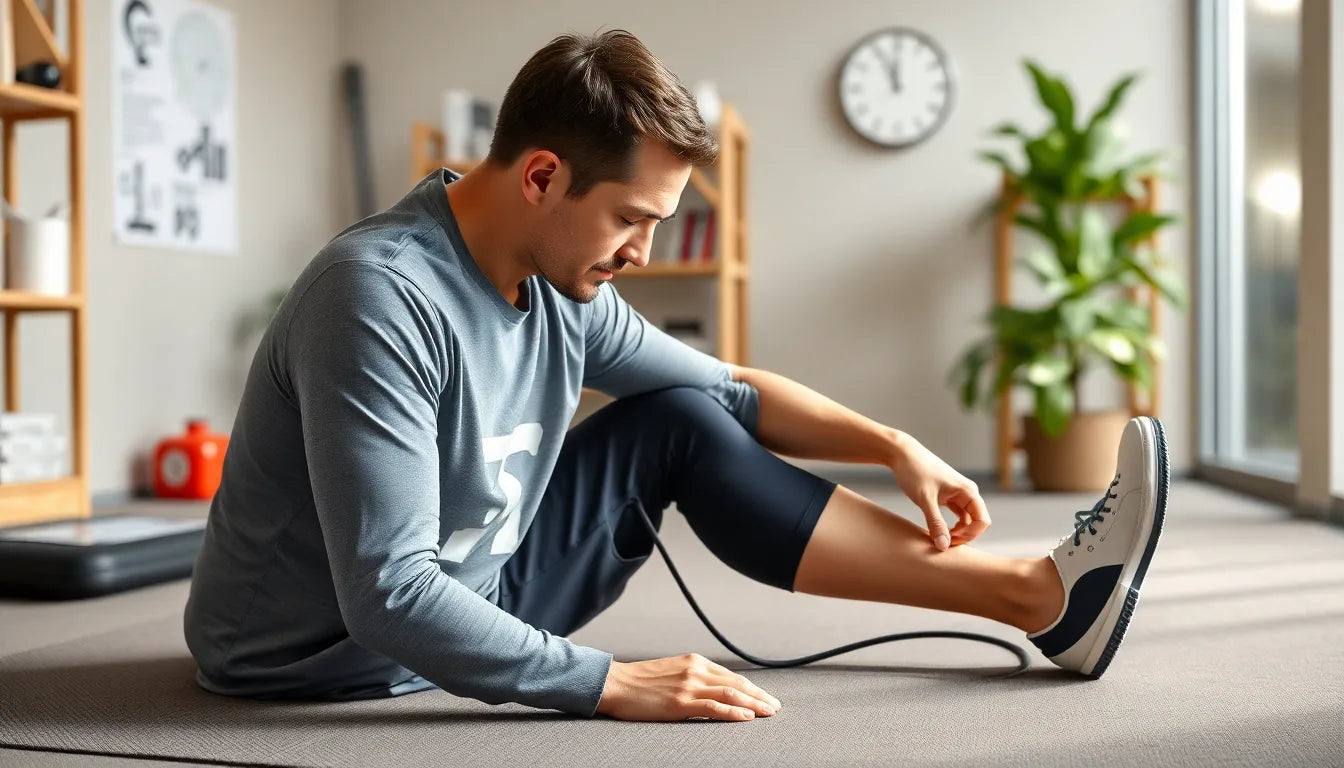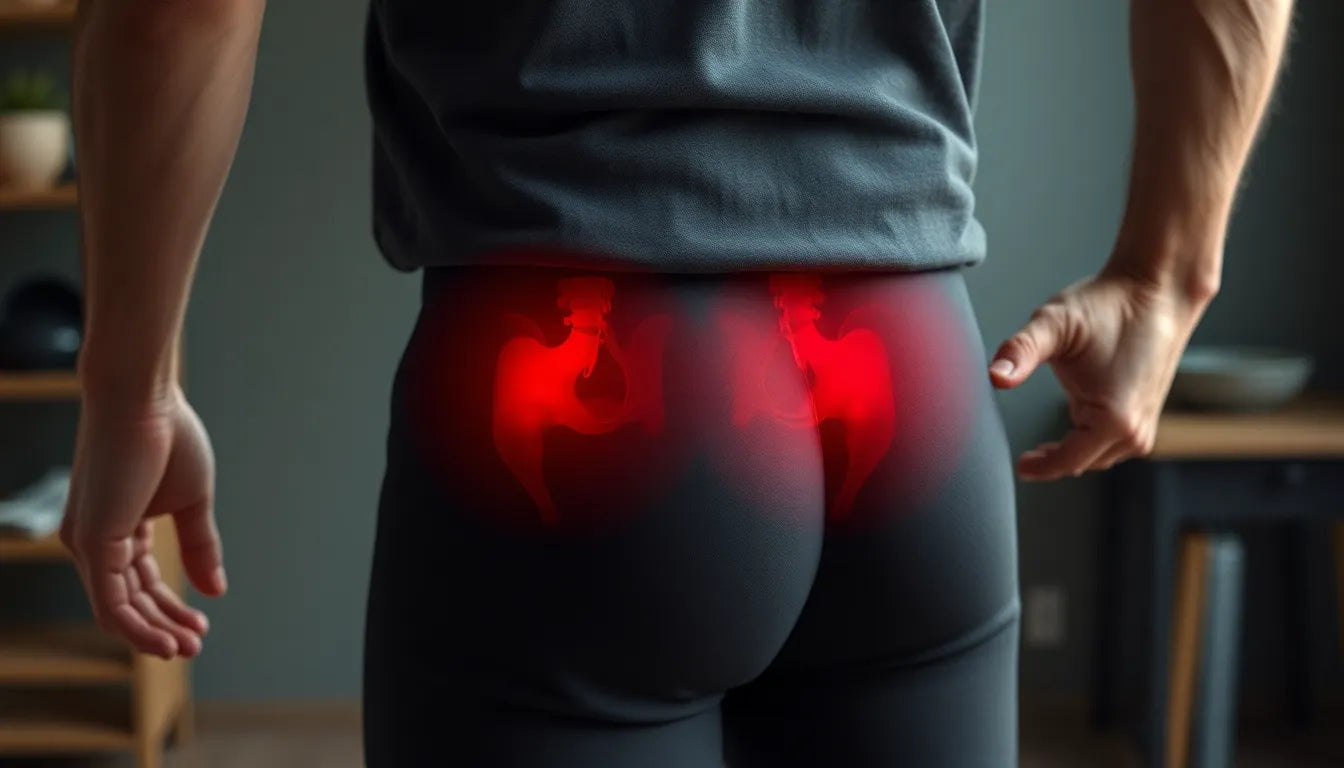Heel spurs, known as "hælspore" in Danish, are a common foot condition that can significantly impact your daily life. These bony growths develop on the underside of the heel bone and are often associated with plantar fasciitis, a painful inflammation of the fibrous band of tissue that runs along the bottom of your foot. Heel spurs themselves may not always cause pain, but when they do, the discomfort can be sharp and persistent, affecting your ability to walk or stand comfortably.
Understanding the causes of heel spurs is crucial for effective management. They typically arise from prolonged strain on the foot muscles and ligaments, repeated tearing of the membrane that covers the heel bone, and as a result of aging. Symptoms often include a sharp pain in the heel, particularly when standing up in the morning or after sitting for a long period. This pain can lead to significant mobility issues, impacting your daily activities and quality of life.
importance of exercise in managing heel spurs
Exercise plays a pivotal role in managing heel spurs. Targeted exercises can help alleviate pain, improve mobility, and prevent further damage. By strengthening the muscles and tendons in the foot, these exercises can reduce the strain on the heel and promote healing. Moreover, incorporating a structured exercise routine can enhance your overall foot health, making it easier to engage in daily activities without discomfort.
Visual guides, such as video demonstrations, are particularly beneficial for learning the proper techniques of these exercises. Watching a hælspore øvelser video can provide clear, step-by-step instructions, ensuring that you perform each movement correctly and safely. This visual learning approach can be especially helpful for those who are new to exercise or unsure about the correct form.
objective of this guide
The purpose of this page is to offer a comprehensive guide to heel spur exercises, complete with video demonstrations to enhance your learning experience. Our goal is to equip you with the knowledge and tools needed to effectively manage heel spur pain through targeted exercises. By following this guide, you can take proactive steps towards reducing discomfort and improving your foot health.
Whether you are looking to alleviate current pain or prevent future occurrences, these exercises can be a valuable addition to your daily routine. We encourage you to explore the video demonstrations and incorporate these exercises into your life for better heel spur management and overall well-being.
video-based exercise guides for hælspore relief
Visual learning through video demonstrations is an invaluable tool for effectively managing heel spurs. These videos provide a clear, step-by-step guide to ensure you perform each exercise with the correct posture and technique, minimizing the risk of injury and maximizing benefits. By observing how each movement is executed, you can better understand the nuances of each exercise, which is crucial for achieving optimal results.
Our curated hælspore øvelser video collection offers a comprehensive overview of exercises specifically designed to alleviate heel spur pain and enhance foot mobility. These exercises focus on stretching, strengthening, and stabilizing the foot and surrounding muscles, providing a holistic approach to heel spur management. Below, we delve into each exercise, detailing their benefits and how to perform them correctly with the aid of video demonstrations.
plantarfascia strækning: relieving tension
The plantarfascia strækning is essential for relieving tension in the plantar fascia, a common source of heel pain. This stretch helps to elongate the tissue, reducing stress on the heel and promoting healing.
To perform this stretch, sit with one leg crossed over the other. Use a towel or your hand to gently pull your toes back towards your shin, feeling a stretch along the arch of your foot. Hold this position for 15-30 seconds and repeat 2-3 times daily. For a visual guide, watch our video demonstration to ensure proper technique.
achilles-stræk: enhancing flexibility
The achilles-stræk targets the Achilles tendon and calf muscles, areas that often contribute to heel spur discomfort. Stretching these muscles can improve flexibility and reduce tension on the heel.
Stand facing a wall, placing your hands against it for support. Extend one leg behind you, keeping the knee straight and the heel on the ground. Lean forward slightly until you feel a stretch in your calf and hold for 15-30 seconds. Repeat with the other leg. Our video demonstration provides a step-by-step visual to help you execute this stretch effectively.
fodmuskelstyrkning: building foot strength
Strengthening the muscles of the foot is vital for maintaining foot health and preventing further heel spur issues. Fodmuskelstyrkning exercises focus on enhancing the intrinsic muscles of the foot.
One effective method is to place a small towel on the floor and use your toes to scrunch it towards you. Alternatively, you can use a resistance band for toe pulls. These exercises should be practiced daily to strengthen your foot muscles. Refer to our video guide for a detailed demonstration.
lægløft (calf raises): supporting heel health
Lægløft, or calf raises, are excellent for strengthening the calf muscles, which play a critical role in supporting the heel.
Stand on a step with your heels hanging off the edge. Slowly raise your body by pushing through the balls of your feet and then lower back down. Incorporate this exercise into your daily routine for best results. Watch our video to learn the correct form and technique.
trappetræning: improving stability
Trappetræning exercises are designed to strengthen the Achilles tendon and calf muscles, enhancing stability and reducing heel pain.
Use a step to lower your heels below the level of the step and then raise upwards. This exercise should be practiced regularly for maximum benefit. Our video demonstration provides clear instructions to guide you through the process.
hælløft: enhancing strength and stability
Hælløft exercises focus on building strength and stability in the heel area, crucial for managing heel spurs.
Stand with your feet shoulder-width apart and rapidly lift onto your toes, then slowly lower back down. Repeat this exercise daily. Our video offers a visual guide to ensure you perform this exercise correctly.
massage med tennisbold: easing pain
The massage med tennisbold technique provides relief by massaging the sole of the foot, helping to alleviate pain and promote relaxation.
Simply roll the sole of your foot over a tennis ball, applying gentle pressure. This massage can be done as needed for pain relief. For a visual demonstration, refer to our video guide.
safety and frequency guidelines
When incorporating these exercises into your routine, it's important to start slowly and gradually increase intensity. Aim for daily or alternate-day practice, ensuring you stay below a moderate pain threshold. Discontinue any exercise that exacerbates pain and consult a healthcare provider if necessary.
By following these guidelines and utilizing our video demonstrations, you can effectively manage heel spur pain and improve your overall foot health. Remember, consistency is key to achieving the best results.
supplementary aids for heel spur relief
While exercises are crucial for managing heel spurs, incorporating ergonomic aids can further enhance your recovery and comfort. Supportive footwear and custom insoles are designed to provide additional cushioning and support, reducing strain on the heel. These aids can complement your exercise routine by promoting better alignment and reducing the impact on your feet during daily activities. Consider exploring Anodyne's range of ergonomic products to find solutions tailored to your needs.

Lumbar support belt
Provides back support and relief with adjustable compression, ideal for daily use and lower back pain.
additional resources for ongoing support
For those seeking further guidance, downloadable or printable guides can be valuable resources. These materials offer a convenient way to keep track of your exercise routines and ensure you're following the recommended techniques. Additionally, they serve as handy references that you can consult at any time. Look for guides that include detailed descriptions and images to support your practice.

37 exercises collected in the ultimate exercise book
A physiotherapist-developed e-book for effective, varied injury prevention and relief exercises.
frequently asked questions
how much pain is normal during these exercises?
It's normal to experience some discomfort while performing these exercises, especially if you're new to them. However, you should not feel sharp or severe pain. If you do, it's important to stop immediately and consult a healthcare professional. The goal is to stay below a moderate pain threshold to prevent further injury.
how long before I see improvement?
With consistent practice, many people start noticing improvements in their heel spur symptoms within a few weeks. However, the timeline can vary based on individual factors such as the severity of the condition and adherence to the exercise regimen. Patience and regular practice are key.
are these exercises suitable for everyone?
These exercises are generally safe for most individuals with heel spurs. However, if you have underlying health conditions or severe pain, it's advisable to consult with a healthcare provider before starting any new exercise routine. They can provide personalized advice based on your specific needs.
can these exercises prevent heel spurs from recurring?
Regularly performing these exercises can help strengthen the muscles and improve flexibility, which may reduce the risk of heel spurs recurring. Additionally, wearing proper footwear and using supportive insoles can further aid in prevention by minimizing stress on the heel.
what should I do if the pain persists?
If you continue to experience pain despite following the exercise regimen, it's important to seek professional medical advice. A healthcare provider can assess your condition and recommend additional treatments or therapies to address your symptoms effectively.
conclusion and call to action
Incorporating these targeted exercises into your daily routine can significantly aid in managing heel spurs and improving your overall foot health. We encourage you to explore the video demonstrations and practice these exercises consistently for the best results. For more resources and ergonomic solutions, visit Anodyne's website and take proactive steps towards a pain-free life.
Kilder
- YouTube. (n.d.). Heel Spur Exercises Video.
- Aalborg Fysioterapi. (n.d.). Specifik Træning for Hælspore.
- Fysio Danmark. (n.d.). Træning Afhjælper Smerter ved Hælspore.
- YouTube. (n.d.). Heel Pain Relief Exercises.
- YouTube. (n.d.). Plantar Fasciitis Stretching Routine.
- Hospitalsenhed Midt. (n.d.). Behandling af Hælspore/Fasciitis Plantaris.
- Lægerne Møllegade. (n.d.). Vejledninger for Hælspore.


















